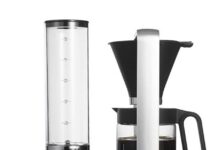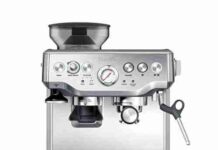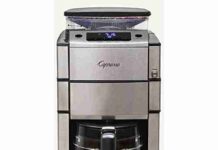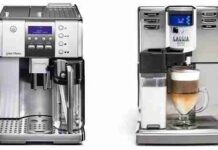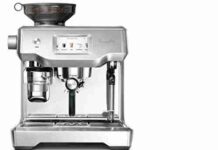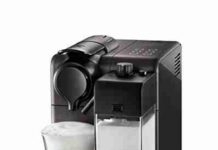Imagine waking up to the rich aroma of freshly brewed coffee every morning without the hassle of grinding beans or measuring portions. In this article, we will explore the fascinating world of pod coffee machines and uncover the secrets behind their magical work. From the process of extracting the perfect cup of coffee to the convenience they offer, we will unravel the inner workings of these innovative machines that have revolutionized our morning routines.
Overview
Introduction to pod coffee machines
Welcome to our comprehensive guide on pod coffee machines! Pod coffee machines are a popular and convenient way to brew your favorite coffee at home or in the office. These machines use pre-packaged coffee pods, also known as coffee capsules, to deliver a quick and consistent cup of coffee with minimal effort. In this article, we will explore the advantages of using pod coffee machines, compare them to other coffee-making methods, and provide an in-depth look at their components, operation, maintenance, cost considerations, environmental impact, and tips for choosing the right machine.
Advantages of using pod coffee machines
One of the main advantages of using pod coffee machines is the convenience they offer. With a simple push of a button, you can have a fresh cup of coffee ready in just a few seconds. There is no need to grind coffee beans, measure the right amount of coffee, or deal with messy coffee grounds. The pre-packaged coffee pods eliminate the need for any additional equipment or accessories, making the brewing process hassle-free. Additionally, pod coffee machines often come with different cup size options, allowing you to customize your coffee experience according to your preferences.
Another advantage of pod coffee machines is the consistency in flavor and quality. The pre-packaged coffee pods are designed to deliver a consistent taste every time, ensuring that you can enjoy your favorite coffee without any variation. This can be particularly beneficial for coffee lovers who prefer a specific brand or flavor and want to ensure a consistent experience with each cup. Additionally, pod coffee machines often have temperature and pressure control mechanisms, further enhancing the brewing process and resulting in a rich and flavorful cup of coffee.
Comparison to other coffee-making methods
When comparing pod coffee machines to other coffee-making methods, it is important to consider factors such as convenience, taste, variety, and cost. While traditional coffee brewing methods like manual pour-over, French press, or espresso machines provide more control over the brewing process, they require more time, effort, and skill. Pod coffee machines, on the other hand, offer a quick and effortless way to enjoy a consistent cup of coffee with minimal preparation and cleanup.
In terms of taste, pod coffee machines may not be able to replicate the complexity and nuances of a freshly brewed cup of coffee from freshly ground beans. However, they still produce a flavorful and enjoyable cup of coffee that satisfies the majority of coffee drinkers. The variety of coffee flavors and blends available in pod form also continues to expand, providing a diverse range of options to cater to different tastes.
When it comes to cost, pod coffee machines can have a higher initial investment compared to traditional brewing methods. However, the cost per cup of coffee can be more affordable in the long run, especially if you regularly purchase expensive specialty coffee or frequently visit coffee shops. Additionally, the convenience and time saved with pod coffee machines can also be considered as a valuable cost-saving factor.
Components of a Pod Coffee Machine
Water reservoir
The water reservoir is a vital component of a pod coffee machine. It stores the water needed for the brewing process and typically has a transparent design to easily monitor the water level. The capacity of the water reservoir can vary depending on the model of the machine, with some machines having larger reservoirs that allow for multiple cups of coffee without frequent refilling. To ensure optimal flavor and avoid any potential bacterial growth, it is important to regularly clean and refill the water reservoir.
Pod chamber
The pod chamber is where the coffee pod is placed for brewing. It is designed to securely hold the pod in place during the brewing process, ensuring proper water flow through the pod. The chamber is usually accessed by lifting a lid or sliding a tray, making it easy to insert and remove the pods. The design of the pod chamber may vary depending on the machine, with some machines offering adjustable chamber sizes to accommodate different pod sizes or using specific mechanisms to pierce the pod for optimal extraction.
Brewing unit
The brewing unit is responsible for the extraction of the coffee from the pod. It typically consists of a pressure system that forces hot water through the pod and extracts the flavor compounds and oils from the coffee grounds. The design and mechanism of the brewing unit can vary between different pod coffee machines, but they all aim to ensure a consistent and thorough extraction process. Some machines may have removable brewing units for easy cleaning and maintenance.
Pump
The pump is an essential component that provides the necessary pressure to push the hot water through the coffee pod. It ensures that the water flows evenly and at the right pressure for optimal extraction. The pump in pod coffee machines is generally electrically operated and can have different power settings to adjust the water pressure according to the desired brew strength. The efficiency and power of the pump can vary between different machines, influencing the overall brewing performance.
Heating element
The heating element is responsible for heating the water to the desired temperature for brewing. It is typically located near the water reservoir and maintains a consistent temperature throughout the brewing process. The power and efficiency of the heating element can vary, affecting the brewing speed and temperature stability. Some machines may offer temperature control settings to customize the brewing temperature according to personal preference.
Control panel
The control panel is where the user interacts with the pod coffee machine. It usually consists of buttons, knobs, or touch-sensitive controls that allow you to select various brewing options, adjust settings, and monitor the brewing progress. The control panel may provide options for cup size selection, brew strength adjustment, temperature control, automatic shut-off, and other programmable features. The design and layout of the control panel can vary between different machines but are typically intuitive and user-friendly.
Drip tray
The drip tray is located beneath the brewing unit and serves as a platform to catch any excess water or coffee that may drip during the brewing process. It helps keep the machine and countertop clean by preventing any spills or drips from reaching the surface. The drip tray is usually removable for easy cleaning and maintenance. Some machines may have adjustable drip trays to accommodate different cup sizes or provide additional space for taller travel mugs.
Cup platform
The cup platform, also known as the cup holder or cup rest, is where you place your cup or mug during the brewing process. It provides stability and prevents any accidental spills or splashes. The cup platform can have different designs and may be adjustable to accommodate different cup sizes. Some machines even offer a dual cup platform, allowing you to brew two cups simultaneously.
Step-by-Step Process
Filling the water reservoir
To start using a pod coffee machine, you need to fill the water reservoir with fresh cold water. Most machines have a clearly marked maximum fill line on the reservoir, which you should not exceed to avoid any overflow or leakage during the brewing process. Use clean, filtered water for better taste and to prevent any mineral buildup in the machine. Make sure to securely close the water reservoir after filling to prevent any water leakage.
Preparing the pod
Before inserting the coffee pod into the machine, it is important to ensure that it is compatible with your machine and that it is intact. Check the packaging or the instructions of your machine to determine the compatible pod types and sizes. You can also check the pod compatibility chart provided by the manufacturer. Once you have selected the desired pod, remove it from its packaging and inspect it for any damages or deformities.
Inserting the pod into the chamber
Next, open the chamber of the pod coffee machine to reveal the pod chamber. Carefully place the coffee pod into the chamber, making sure that it is properly aligned and fitted in place. Some machines may require you to position the pod in a specific way or orientation, so refer to the machine’s instructions if necessary. Close the chamber securely, ensuring that it is tightly sealed to prevent any water or steam from escaping during the brewing process.
Closing the chamber
After inserting the pod into the chamber, close the chamber lid or tray, depending on the design of your pod coffee machine. By closing the chamber, you create a sealed environment that allows for optimal water flow and pressure during the brewing process. Make sure that the chamber is securely closed to avoid any leaks or malfunctions.
Selecting the desired cup size
Most pod coffee machines offer various cup size options to accommodate different preferences and brewing strengths. Check the control panel of your machine to find the cup size selection buttons or options. Depending on your machine, you may have options for espresso, lungo, regular coffee, or even customized cup sizes. Select the desired cup size by pressing the corresponding button or adjusting the settings on the control panel.
Activating the brewing process
Once you have selected your desired cup size, it’s time to activate the brewing process. This is usually done by pressing a start, brew, or play button on the control panel. After pressing the button, the machine will start heating the water and building up pressure. Some machines may have preheating indicators or progress bars on the control panel to let you know the status of the brewing process.
Water heating and pressure build-up
During the brewing process, the machine will start heating the water to the optimal temperature for brewing. The heating element will maintain a consistent temperature, ensuring that the water reaches the ideal range for extracting the coffee flavors. At the same time, the pump will start building up pressure, creating the necessary force to push the hot water through the coffee pod and extract the coffee compounds.
Water injection into the pod
Once the water reaches the desired temperature and the pressure is built up, the machine will inject the hot water into the pod. Small piercing needles or jets in the brewing unit will puncture the top or bottom of the pod, allowing the water to flow through the coffee grounds. The water will come into contact with the coffee grounds, extracting the flavors, oils, and aromas.
Coffee extraction
As the hot water flows through the pod, it extracts the coffee flavors and oils, resulting in a brewed cup of coffee. The brewing time can vary depending on the machine and the cup size selected. Generally, it takes around 20 to 30 seconds for a single-serve pod machine to extract a single cup of coffee. The extraction process is optimized for maximum flavor extraction while minimizing any potential bitterness or over-extraction.
Collection of brewed coffee
Once the brewing process is complete, the machine will dispense the brewed coffee into your cup. The coffee will flow through the brewing unit and directly into your cup. Some machines may have adjustable cup platforms or spouts to accommodate different cup sizes or prevent any splashing or spills. Once your cup is filled, you can safely remove it from the cup platform and enjoy your freshly brewed coffee.
Water Heating and Pumping System
Heating element operation
The heating element in a pod coffee machine is typically an electrically powered component that generates heat to warm the water for brewing. It operates by converting electrical energy into heat energy through a resistive heating element. The heating element is controlled by a thermostat that maintains a consistent temperature throughout the brewing process. It turns on when the water temperature drops below the desired range and turns off once the water has reached the optimal brewing temperature.
Temperature control mechanism
To ensure a consistent brewing temperature, pod coffee machines employ temperature control mechanisms. These mechanisms typically rely on sensors and feedback loops to monitor and adjust the water temperature. The sensors detect the current water temperature, and the feedback loops compare it to the desired brewing temperature. If the water is too cold, the heating element is activated to raise the temperature. On the other hand, if the water is too hot, the heating element is turned off to prevent over-extraction or scorching of the coffee grounds.
Water pumping mechanism
The water pumping mechanism in pod coffee machines is responsible for generating the necessary pressure to push the water through the coffee pod. It usually consists of an electric pump that draws water from the reservoir and pressurizes it before it reaches the brewing unit. The pump operates at a specific pressure range to ensure optimal extraction of flavors from the coffee grounds. Some machines may have adjustable pump settings to allow for customization of the brewing pressure according to personal preferences.
Pressure regulation
Pressure regulation is crucial for the proper extraction of coffee flavors from the pod. Pod coffee machines employ pressure regulators to maintain a consistent pressure throughout the brewing process. These regulators ensure that the water flows through the coffee grounds at the right pressure and speed, promoting even extraction and preventing any potential channeling or uneven saturation. The pressure regulation mechanism can vary between machines, with some using springs, valves, or electronic controls to maintain the desired pressure level.



